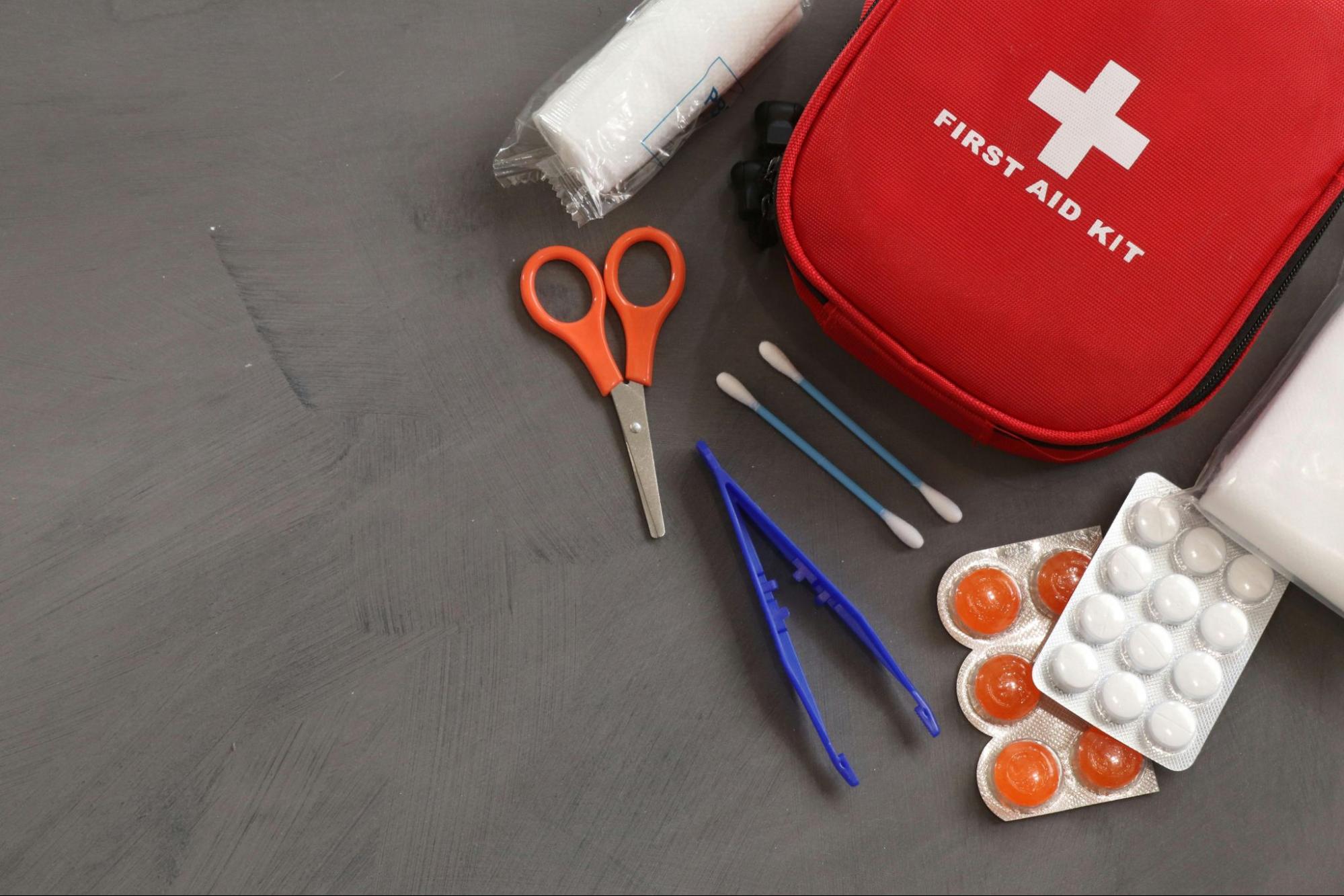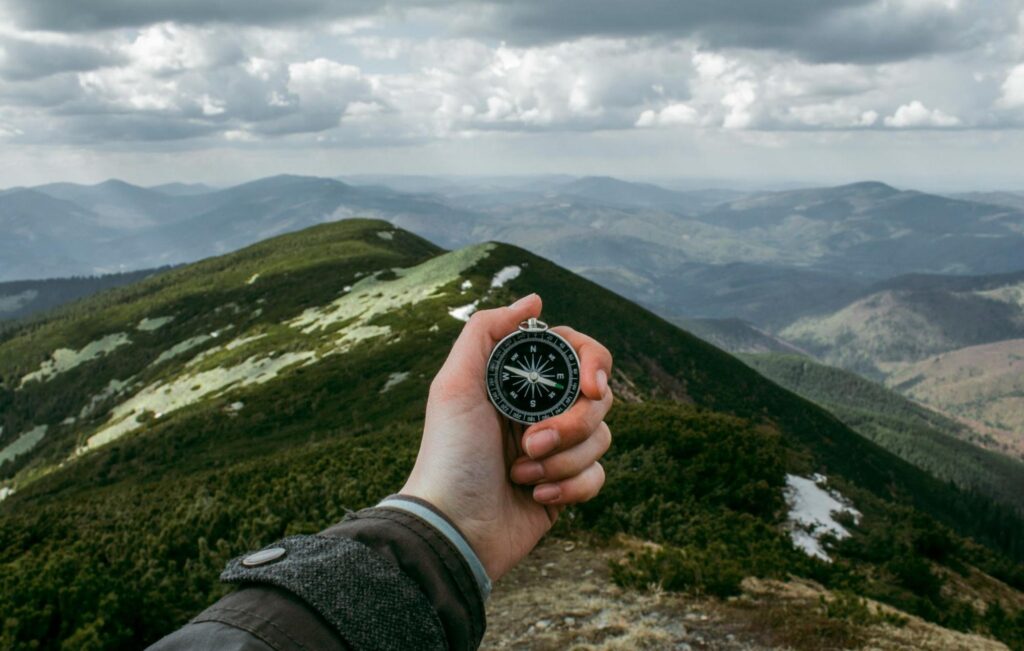Embarking on a solo wilderness adventure offers an unparalleled opportunity to connect with nature, test one’s limits, and achieve personal growth. However, the unpredictability of nature requires thorough preparation to ensure safety and success.
Being well-equipped with essential survival skills and the right gear is not just beneficial—it’s crucial for handling unexpected challenges effectively and enjoying the wilderness responsibly.
Essential Survival Skills
Navigation Skills
Using a Compass and Map: The fundamental tools for wilderness navigation are a compass and a detailed map of the area.
Learning to read a topographic map and understanding how to align it with a compass for orientation ensures that you can find your way through unfamiliar terrain.
Always orient the map to the north and use the compass to direct your travel, checking your progress frequently.
Techniques for Navigating by Natural Landmarks and Celestial Bodies: When traditional navigation tools are unavailable, natural landmarks and celestial bodies can guide you.
During the day, the sun rises in the east and sets in the west, providing a general sense of direction.
At night, locating the North Star (Polaris) in the Northern Hemisphere gives you a northward bearing. Observing the patterns of rivers, mountain ranges, and other large features can also help maintain a correct path.
Photo by Marek Piwnicki: https://www.pexels.com/photo/calm-17880230/
Finding and Purifying Water
Methods for Locating Water Sources: Water sources in the wilderness include streams, lakes, and morning dew on vegetation. Topographic maps can help identify potential water sources, but always confirm their existence as environmental conditions can change.

Different Techniques for Purifying Water: Before drinking, water must be purified to eliminate pathogens. Boiling is the most effective method—boil water for at least one minute, or three minutes at higher altitudes. Chemical treatments with iodine or chlorine, and portable water filters, are also reliable options for ensuring water safety.
Food Acquisition
Safe Foraging Practices for Edible Plants and Fungi: Knowledge of local flora is vital for safe foraging. Identify common edible plants and mushrooms, but also be aware of their poisonous look-alikes. Guides and apps can aid in this, but when in doubt, it’s safer to avoid consumption.
Basics of Hunting and Trapping for Protein: In survival situations, small game and fish can provide necessary protein. Simple snares and fishing lines can be effective. Understanding local wildlife behavior and habitat preferences increases success rates in trapping or fishing.
Shelter Building
Types of Shelters Appropriate for Different Environments: The environment dictates the type of shelter to build. In forests, a lean-to made of branches and leaves can protect you from wind and rain. In snowy conditions, a snow cave can provide insulation and warmth.

Tips on Building Effective and Safe Shelters: Choose a location that is dry and protected from the wind. Use natural materials available around you and ensure the shelter is stable. The shelter should be large enough to lie in but snug enough to retain body heat.
Fire Making
Techniques for Starting a Fire in Various Weather Conditions: Mastering the creation of fire under different conditions is crucial. Keep waterproof matches, a lighter, and a flint starter in your survival kit. In wet conditions, look for dry wood under dense trees or inside logs.
Safety Tips for Managing a Fire in the Wilderness: Always clear a wide area around the fire spot to prevent the spread of flames. Never leave a fire unattended, and fully extinguish it by dousing it with water or covering it with soil before leaving the site.
Each of these skills not only enhances your ability to survive but also enriches the wilderness experience, making it safer and more enjoyable.
Health and Safety
First Aid Skills
Essential First Aid Techniques for Common Injuries: Knowing how to respond to common injuries such as cuts, burns, sprains, and fractures is critical.
Techniques include cleaning and dressing wounds, properly applying splints, and managing minor burns.

Recognizing symptoms of more severe conditions like hypothermia and heat stroke is also crucial for timely intervention.
Creating and Packing an Effective First Aid Kit: Your first aid kit should include items such as bandages, antiseptic wipes, adhesive tape, scissors, tweezers, pain relievers, and specific medications if required.
Include items tailored to your environment, such as snake bite kits or water purification tablets.
Dealing with Wildlife
How to Safely Observe and Interact with Wildlife: Observing wildlife can be a highlight of any wilderness adventure, but it’s important to do so at a safe distance. Use binoculars for close-up views and avoid approaching or feeding animals to prevent unpredictable behavior.
Preventive Measures to Avoid Attracting Wild Animals: Store food and trash securely to avoid attracting animals to your campsite. Cook and eat away from your sleeping area and ensure all cooking equipment is cleaned after use. Strong odors can attract animals, so consider wind direction when setting up camp.
Mental Preparedness
Psychological Aspects of Solo Survival: The mental challenge of surviving alone in the wilderness can be as demanding as the physical challenges. Fear, loneliness, and anxiety are common, and managing these emotions is key to maintaining focus and making rational decisions.

Strategies for Maintaining Mental Health and Resilience: Develop a routine to provide structure to your days. Set small, achievable goals to create a sense of progress.
Techniques such as mindfulness meditation can also help maintain a calm mind. Regularly remind yourself of your reasons for embarking on the adventure to keep your spirits up and stay motivated.
By mastering these health, safety, and mental preparedness skills, you’ll enhance your ability to handle the challenges of solo wilderness adventures, ensuring a safer and more fulfilling experience.
Gear and Equipment
Essential Gear from the Alone Gear List
A well-prepared solo adventurer’s gear is crucial for survival and efficiency in the wilderness. From the Alone Gear List, items such as a high-quality knife, firestarter, shelter materials, and a durable backpack are indispensable. Each piece of equipment must be reliable, versatile, and suitable for the environment you’ll be exploring.
- High-Quality Knife: Essential for tasks from preparing food to making tools and building shelters.
- Firestarter: A necessity for warmth and cooking; options include flint strikes, waterproof matches, and lighters.
- Shelter Materials: Include a lightweight tent, tarp, and sleep system that are appropriate for the climate.
Choosing and Using Equipment Effectively
Selecting the right equipment involves understanding the specific demands of your adventure.

Consider factors like the environment, expected weather conditions, and the duration of your trip.
Learn how to use each piece of equipment before you depart; practice setting up your shelter, starting a fire with your firestarter, and using your knife safely and effectively.
Advanced Survival Techniques
Signaling for Help and Making Tools
- Signaling for Help: Techniques include using mirrors, smoke signals, or makeshift flags to attract the attention of rescuers.
- Making Tools from Natural Materials: Skills like creating a spear from a branch or fashioning a fishing hook from a bone can be crucial for acquiring food.
Navigating Extreme Weather Conditions
Understanding how to navigate and survive in extreme weather conditions—be it intense heat, cold, or rain—is vital. Adjust your shelter, clothing, and activity level based on the weather, and always have a contingency plan.
Legal and Ethical Considerations
Understanding the Legalities
Before embarking on your adventure, be aware of the legal aspects of wilderness exploration. This includes obtaining necessary permits, understanding restricted areas, and knowing the rules specific to the region you’re exploring.
Ethical Considerations: Leave No Trace
Adhering to Leave No Trace principles is crucial for preserving the natural beauty and sustainability of wilderness areas. This includes packing out all trash, minimizing campfire impacts, and respecting wildlife and other visitors.
Endnote
Preparedness is the cornerstone of any successful solo wilderness adventure. Having the right skills and gear, understanding advanced survival techniques, and respecting legal and ethical guidelines are all critical components of this preparedness.
By equipping yourself properly and respecting the wilderness, you ensure not only your own safety and enjoyment but also the preservation of these wild spaces for future adventurers. The more prepared you are, the more enjoyable and safe your adventure will be.

